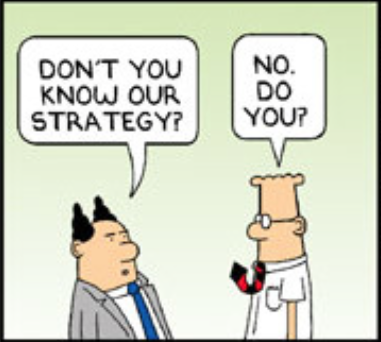 How to become one with your association’s strategic goals
How to become one with your association’s strategic goals
No, I’m not suggesting you rise at 5 a.m. and recite your association’s strategic plan as your daily morning mantra. But I’d like you to answer this simple question. How many of your association’s strategic goals can you recall right now?
(No cheating! And not the easy bits about your vision, mission, who you serve, or your programs and services — just your goals!)
I’ll wait…
Was that a little embarrassing? You’re not alone — when I tried this recently, I was pretty embarrassed too!
Last month I joined the board of a local non-profit, just in time to take part in the third and final board meeting to update our strategic plan. It was a productive and well-run meeting, expertly facilitated by non-profit consultant Lizann Peyton, and ten minutes before the scheduled end we had agreed on a list of five major goals, each with several subgoals.
Then Lizann asked us to avert our eyes from our notes and recall the goals we had just spent two hours formulating.
Oh my goodness! My mind went blank. We’d just been talking about our goals, but at that moment it became clear to me (and I suspect to most if not all board members) that we hadn’t internalized them.
That’s upsetting because, Dilbert jokes aside, organizational strategic plan goals need to be top of mind for board members and staff if there’s going to be a reasonable chance that they’ll actually be met. (Otherwise, what’s the point of having them?)
Lizann had clearly seen this movie before. She smoothly suggested three ways for us to become more familiar with our strategic goals at our board meetings.
Three suggestions on how to assist board members become one with your strategic goals
1) Add your list of strategic plan goals to each board meeting agenda. (Print them on the back if you’re still using paper agendas.)
2) At each board meeting, organize the agenda to reflect the structure of your strategic goals. Also, include a short discussion about some part of your strategic direction. For example, if one of your goals is to assess opportunities for the use of new space, include an agenda item at each meeting for a progress update from the new space committee.
3) Have the executive director’s reports to the board be organized around the strategic goals too. After all, the director’s job is to help move the organization in the direction set by the board.
Lessons learned
My inability to recall conclusions that we’d just spent two hours creating clearly indicates the limitations of learning models that rely on one-time exposure to information (e.g. lecturing). Learning research tells us that “repeat to remember” is key to encoding learning in long-term memory. Although the monthly interval between our meetings is longer than optimum, following Lizann’s recommendations over time should help us internalize our strategic goals, reducing future potential embarrassment and, more importantly, improving our ability to achieve them.
Perhaps these recommendations will help your association’s staff and board members too!
Have you found other ways to help internalize your organization’s strategic goals? Share them in the comments below.

 How to become one with your association’s strategic goals
How to become one with your association’s strategic goals